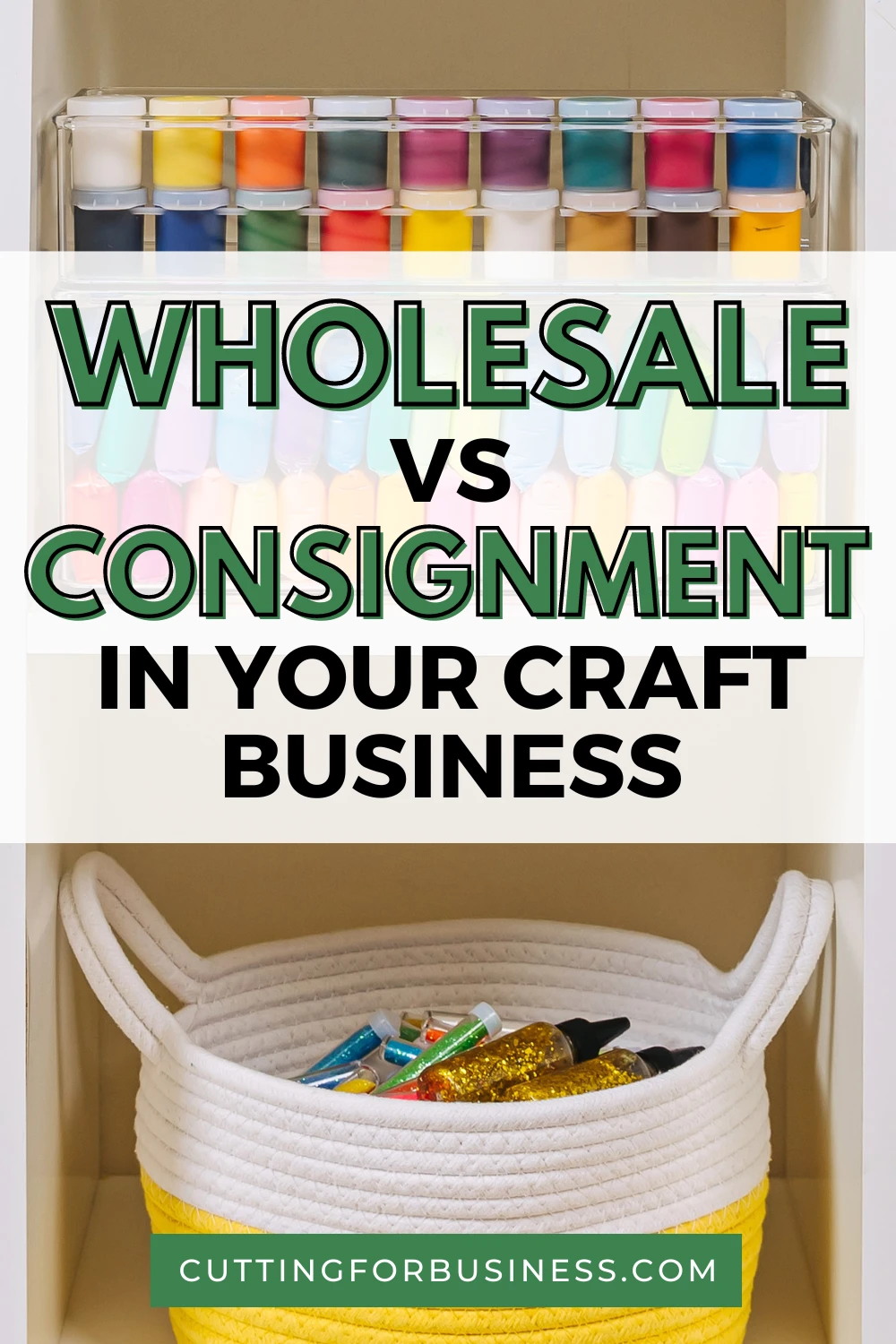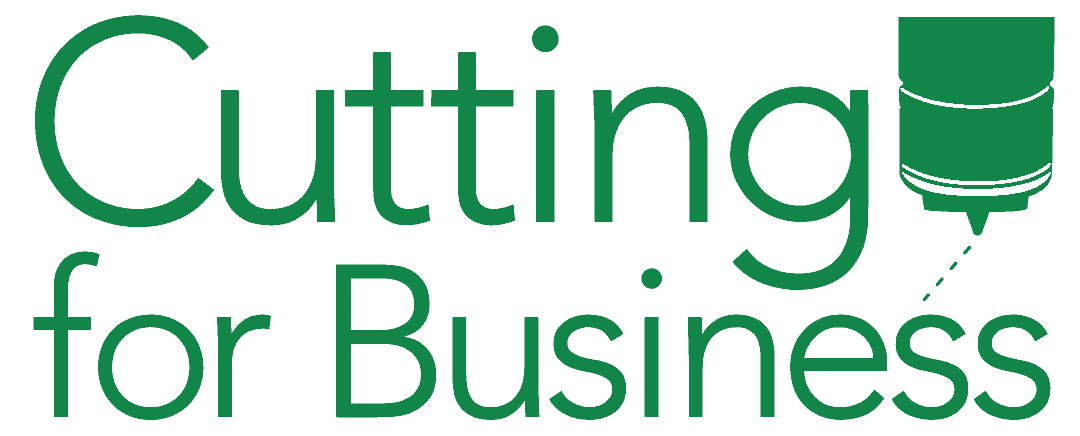Affiliate Disclosure: As an Amazon Associate I earn from qualifying purchases. Additionally, I may get commissions for purchases made through other affiliate links in this post.
If you are ready to expand your Silhouette or Cricut craft business, one potential step is to get your products into existing stores.
There are generally two methods for doing this: wholesale or consignment. Let’s talk about wholesale vs consignment in your craft business.
Table of Contents

Wholesale vs Consignment in Your Craft Business
What is Wholesale?
- You sell your craft products to another person or store in a large quantity at a discount. They resell the items for a profit.
- The person or company buying the products pays for the items up front. They own the products and it is their responsibility to sell the items.
- You will generally have a minimum order amount or quantity. The amounts will vary greatly from business to business.
- You’ll have a set return policy for the person or store purchasing the products. Will you refund damaged or defective items?
- You will have a set policy for lead time. How long will it take you to make the products from the time that the person or shop orders them?
- You will also need to have shipping policies. Generally, the shipping costs of the products will be paid for by the person or store buying the item.
- Wholesale pricing is generally determined using the same formula I mentioned in another post on pricing your items: Cost of Supplies + Labor + 10-15% Overhead = Total Costs, then Total Costs x 2 = Wholesale Price, and Wholesale Price x 2 = Retail Price.
What is Consignment?
- You make an agreement with another person or store to sell your items for you. The other person or store does not own your items.
- You get paid after the product is sold. The person or store that sold the item takes a percentage of the sale price as a commission. Typically, consignment is based on a 60/40 split. This means that you get 60% of the selling price and the other person or store keeps 40%. I’ve seen splits vary to 70/30, 80/20, and 50/50. Personally, I would not make a consignment agreement with a split of less than 60/40. Instead, I would offer wholesale pricing which is usually a 50% discount.
- Both you, as the designer, and the store benefit from consignment agreements, as the store can add new products without spending money and you can get your products to a new market.
- You’ll need to have a payment contract. How often will you get paid? How will you get paid?
- You will also want to have an agreement that states how long the products will be for sale before they are returned to you.
- You’ll also want to have an agreement on who will pay for items that get broken or stolen. If an item is faulty and becomes broken, you would generally pay to replace the item. In contrast, if your item is stolen from a store, the store owner would have to pay you for the sale.
- You will need to set out shipping arrangements if the store is not local. Often, it is the designer that pays for shipping to the store. If the item is not sold, the store pays for the shipping back to the designer.
- Consignment agreements are usually easier to land if you are a new small business. Successful consignment arrangements can also be a stepping stone to receiving a wholesale account with a store.
Which is Better: Wholesale, Consignment, or Neither?
Honestly, this is one question that I can not answer for you. It will depend on your individual business. In some cases, wholesale is a better choice – but in other cases, consignment is a better choice.
And, remember, wholesale and consignment arrangements are not for everyone. If you choose to only sell directly to your customers, you can still have a profitable business.
Things to Consider Before Selling Crafts Wholesale
If you are ready to start selling your crafts wholesale, read my list of 10 things to consider before selling crafts wholesale.
Since 2015, Christine Schinagl has been helping crafters start and run craft businesses through her blog, Cutting for Business. As a Silhouette and Cricut crafter herself, she has a unique take on what works and what doesn’t work in the craft business world. She also enjoys teaching other crafters how to create digital SVG designs, available at through the Design with Me series.
